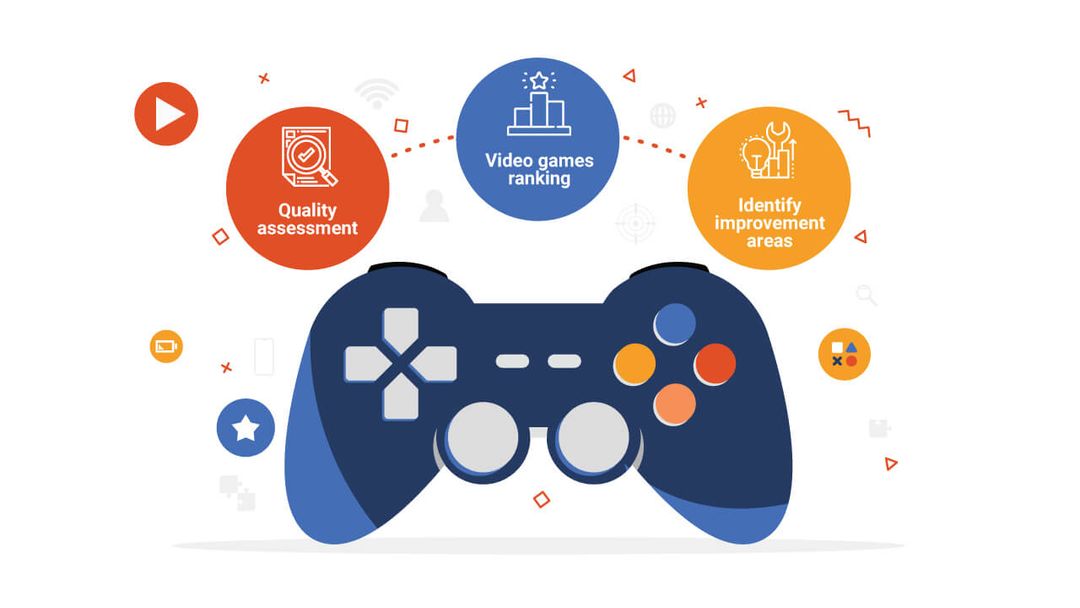The Role Of UI/UX Designers In The World Of NFTs And The Metaverse
The emergence of NFTs (Non-Fungible Tokens) and the growing fascination with the metaverse have not only transformed the way we perceive digital ownership but have also given rise to a new set of challenges and opportunities for UI/UX (User Interface/User Experience) designers. In this article, we will explore the pivotal role of UI/UX designers in shaping the user experiences within the realms of NFTs and the metaverse.
Understanding NFTs and the Metaverse
Before delving into the role of UI/UX designers, let’s briefly clarify what NFTs and the metaverse entail.
NFTs: NFTs are unique digital assets, often representing ownership or proof of authenticity of digital or physical items. These tokens are indivisible and cannot be exchanged on a one-to-one basis like cryptocurrencies, making each NFT a one-of-a-kind digital collectible or asset.
Metaverse: The metaverse refers to a collective virtual shared space, merging aspects of augmented reality (AR), virtual reality (VR), and the internet. It’s an interconnected digital universe where users can interact, socialize, work, and even create content.
The Role of UI/UX Designers in NFTs
In the rapidly evolving world of Non-Fungible Tokens (NFTs), where digital assets are bought, sold, and traded, UI/UX (User Interface/User Experience) designers play a crucial role in shaping the user experience. NFTs represent unique digital assets, such as digital art, collectibles, and virtual real estate, and designing platforms and interfaces that facilitate their discovery and transactions is essential. Let’s delve into the intricate role of UI/UX designers in the NFT space.
It was a great time working on this NFT project with the amazing @NFT__NG Team as the UI/UX Designer. A one of it’s kind in Nigeria. @NFT__NG project is a project bringing NFTs and Blockchain technology to the mainstream media. First of it’s kind in Nigeria. pic.twitter.com/3sIOeybFVA
— MojolaOluwa 𝕏 (@mistamojolarh) October 1, 2022
The Role of UI/UX Designers in NFTs
- NFT Marketplace Design: One of the primary roles of UI/UX designers in the NFT space is to create user-friendly and visually appealing NFT marketplaces. These platforms serve as digital marketplaces where users can browse, buy, sell, and trade NFTs. Designers are responsible for the layout, navigation, and overall aesthetics of these marketplaces. The goal is to provide an intuitive and engaging platform that encourages users to explore and transact.
- NFT Listing Pages: NFTs are showcased on listing pages, where collectors and creators provide information about the assets. UI/UX designers are tasked with creating visually appealing and informative listing pages. These pages should include high-quality images or animations of the NFT, detailed descriptions, and transparent information about the asset’s history and ownership. Designers also consider how to display NFT attributes and metadata effectively.
- User Onboarding: Simplifying the onboarding process is crucial. Designers work on creating smooth and intuitive registration and authentication processes. They ensure that users can easily set up their wallets, connect them to the marketplace, and start participating in the NFT ecosystem.
- Wallet Integration: Many NFT transactions involve cryptocurrency wallets. UI/UX designers are responsible for seamlessly integrating wallet functionalities into NFT marketplaces. This includes designing wallet connection interfaces, transaction history views, and balance displays.
- Auction and Bidding Interfaces: For NFTs sold through auctions or bidding, designers create interfaces that facilitate the bidding process. This involves designing clear and engaging bidding screens, countdown timers, and real-time updates on bids.
- Token Visualization: UI/UX designers are responsible for how NFTs are visually represented in users’ digital wallets. They design unique and visually appealing representations of each NFT, ensuring that collectors can easily identify and interact with their digital assets.
- User Feedback and Notifications: Designers incorporate user feedback mechanisms and notification systems. Users should receive alerts about the status of their bids, new listings from their favorite artists, and updates on the NFTs they own.
- Mobile Responsiveness: Given the increasing use of mobile devices, UI/UX designers ensure that NFT marketplaces and platforms are fully responsive and provide an optimal experience on smartphones and tablets.
- Privacy and Security: Maintaining the privacy and security of users’ data and assets is a top priority. Designers work on implementing robust security measures and educating users about best practices for safeguarding their NFTs and wallets.
Non-Tech web3 jobs in 2022
– Community manager
– Social media manager
– Content/NFT marketting specialist
– UI UX designer
– Project manager
– Public relations manager
– Campaign marketer
– NFT/product designer
– Partnership manager
– Recruiter
– Content writerYou got this 🔥
— Langford ツ (@langford_dev) January 17, 2022
The Role of UI/UX Designers in the Metaverse
The concept of the metaverse, a vast and interconnected digital universe, has captured the imagination of technologists and visionaries alike. It represents a convergence of virtual and physical realities, offering limitless possibilities for exploration, interaction, and creativity. In this burgeoning landscape, the role of UI/UX (User Interface/User Experience) designers is paramount. Let’s delve into the intricate and multifaceted role they play in shaping the metaverse.
Defining the Metaverse
Before diving into the role of UI/UX designers, it’s crucial to understand what the metaverse entails. The metaverse is a collective virtual shared space, often associated with augmented reality (AR), virtual reality (VR), and the internet. It serves as a digital parallel to the physical world, where users can interact, socialize, work, create, and engage in a wide range of activities.
The Role of UI/UX Designers in the Metaverse
- Creating Immersive Environments: UI/UX designers are tasked with creating immersive and engaging virtual environments within the metaverse. This involves designing visually appealing landscapes, structures, and objects that capture the essence of the digital world. These environments should evoke emotions and encourage exploration.
- Avatar and Character Design: Users in the metaverse typically create digital representations of themselves known as avatars. UI/UX designers are responsible for designing tools that allow users to customize their avatars, ensuring that they accurately reflect individuality and provide a sense of identity within the virtual space.
- Navigation and Wayfinding: Navigating the vast metaverse can be a daunting task. Designers must create intuitive navigation systems, maps, and directional cues that help users move seamlessly through the virtual world. This includes teleportation systems, waypoints, and interactive maps.
- User Interaction Interfaces: In the metaverse, interaction is a key component. UI/UX designers design interfaces that enable users to interact with the environment, other users, and objects. These interfaces include gesture recognition, voice commands, and haptic feedback systems for a more immersive experience.
- Social Spaces and Communication Tools: The metaverse thrives on social interaction. Designers create virtual meeting spaces, social hubs, and communication tools that enable users to connect and communicate with others in real time. This includes text chat, voice chat, and video conferencing interfaces.
- Content Creation Tools: User-generated content is a driving force in the metaverse. UI/UX designers develop intuitive and powerful content creation tools, such as 3D modeling software, virtual art studios, and world-building platforms, allowing users to contribute to the metaverse’s growth.
- Safety and Moderation: Ensuring a safe and respectful environment is crucial. Designers implement moderation systems and reporting mechanisms to address harassment, abuse, and inappropriate behavior within the metaverse.
- Accessibility: Accessibility is a fundamental consideration. UI/UX designers work to ensure that the metaverse is accessible to individuals with disabilities, incorporating features such as screen readers, voice commands, and customizable interfaces.
- Scalability and Cross-Platform Compatibility: The metaverse should be accessible across various devices and platforms, from VR headsets to desktop computers and mobile devices. UI/UX designers face the challenge of creating interfaces that adapt seamlessly to different hardware and screen sizes.
- Economic and Commerce Interfaces: As the metaverse evolves, it becomes a hub for economic activities. Designers create interfaces for virtual commerce, enabling users to buy, sell, and trade digital assets, NFTs, and virtual goods.
Also, read – Top 10 Companies In The World Working On Metaverse Development
Challenges and Future Trends
UI/UX designers in the metaverse face unique challenges, such as designing for immersive experiences, ensuring cross-platform compatibility, and fostering social interactions while addressing privacy and safety concerns. Additionally, designers need to adapt to emerging technologies like AR glasses and haptic feedback devices.
In conclusion, UI/UX designers play a pivotal role in shaping the metaverse, transforming abstract concepts into immersive, user-friendly digital realities. As the metaverse continues to evolve and expand, their role will remain at the forefront of creating captivating, inclusive, and engaging digital spaces where users can explore, connect, and thrive. Designers in the metaverse are not just crafting interfaces; they are architects of an entirely new digital civilization.
Stay informed with daily updates from Blockchain Magazine on Google News. Click here to follow us and mark as favorite: [Blockchain Magazine on Google News].
Get Blockchain Insights In Inbox
Stay ahead of the curve with expert analysis and market updates.
latest from tech
Disclaimer: Any post shared by a third-party agency are sponsored and Blockchain Magazine has no views on any such posts. The views and opinions expressed in this post are those of the clients and do not necessarily reflect the official policy or position of Blockchain Magazine. The information provided in this post is for informational purposes only and should not be considered as financial, investment, or professional advice. Blockchain Magazine does not endorse or promote any specific products, services, or companies mentioned in this posts. Readers are encouraged to conduct their own research and consult with a qualified professional before making any financial decisions. The featured image used is just a creative depiction of the title and it does not intend to hurt sentiments of any person or institution. If it hurts anyone sentiments, please do not hesitate to reach out to Blockchain Magazine.

 Bitcoin
Bitcoin  Ethereum
Ethereum  XRP
XRP  Tether
Tether  Solana
Solana  USDC
USDC  Dogecoin
Dogecoin  Cardano
Cardano  Lido Staked Ether
Lido Staked Ether  TRON
TRON  Wrapped Bitcoin
Wrapped Bitcoin  Chainlink
Chainlink  Wrapped stETH
Wrapped stETH  Avalanche
Avalanche  Sui
Sui  Stellar
Stellar  Toncoin
Toncoin  Hedera
Hedera  Shiba Inu
Shiba Inu  LEO Token
LEO Token  Hyperliquid
Hyperliquid  Litecoin
Litecoin  Bitget Token
Bitget Token  WETH
WETH  USDS
USDS  Polkadot
Polkadot  Bitcoin Cash
Bitcoin Cash  Ethena USDe
Ethena USDe  Wrapped eETH
Wrapped eETH  Uniswap
Uniswap  MANTRA
MANTRA  Ondo
Ondo  Pepe
Pepe  Monero
Monero  Aave
Aave  WhiteBIT Coin
WhiteBIT Coin  NEAR Protocol
NEAR Protocol  Mantle
Mantle  Official Trump
Official Trump  Aptos
Aptos  Dai
Dai  Internet Computer
Internet Computer  Ethereum Classic
Ethereum Classic  Bittensor
Bittensor  OKB
OKB  Cronos
Cronos  POL (ex-MATIC)
POL (ex-MATIC)  Gate
Gate 






